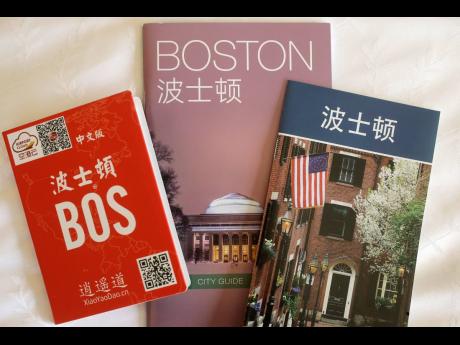Chinese tourism to US drops for first time in 15 years
After more than a decade of rapid growth, Chinese travel to the United States is falling. And that has cities, malls and other tourist spots scrambling to reverse the trend.
Travel from China to the US fell 5.7 per cent in 2018 to 2.9 million visitors, according to the National Travel and Tourism Office, which collects data from US Customs forms. It was the first time since 2003 that Chinese travel to the US slipped from the prior year.
Friction between the US and China is one reason for the slowdown. The Trump administration first imposed tariffs on Chinese solar panels and washing machines in January 2018, and the trade war has escalated from there. The US now has a 25 per cent tariff on US$200 billion worth of Chinese imports, while China has retaliated with tariffs on US$60 billion of US imports.
Last summer, China issued a travel warning for the US, telling its citizens to beware of shootings, robberies and high costs for medical care. The US shot back with its own warning about travel to China.
Wang Haixia, who works at an international trade company in Beijing, travelled to the US in May for her sister’s graduation. She and her family planned to spend 10 days in Illinois and New York.
Wang says she might have stayed longer but doesn’t want to contribute to the US economy amid the trade war.
“I cannot cancel this trip because I promised my sister I would go to her commencement,” she said. “My relatives will contribute more than 100,000 yuan to America just staying for 10 days, and that’s enough.”
There are other reasons behind the slowdown. Economic uncertainty in China has travellers at the lower end of the market vacationing closer to home, says Wolfgang Georg Arlt, director of the Chinese Outbound Tourism Research Institute, which found that 56 per cent of travellers leaving China in the last three months of 2018 went to Hong Kong, Macau or Taiwan compared with 50 per cent in 2017. Those who do travel farther are seeking out more exotic destinations like Croatia, Morocco and Nepal.
Chinese travel to the US had already been moderating from its breakneck pace earlier this decade. In 2000, some 249,000 Chinese visited the US. That tripled to 802,000 by 2010, then tripled again by 2015, in part because of higher incomes, better long-haul flight connections and an easing of visa restrictions, according to McKinsey, the consulting firm.
The US welcomed more than 3 million Chinese visitors in 2016 and 2017. But year-over-year growth edged up just 4 per cent in 2017, the slowest pace in more than a decade.
Most industry watchers agree that any downturn is temporary, since China’s middle class will only continue to expand. The US government forecasts Chinese tourism will grow 2 per cent this year to 3.3 million visitors, and will reach 4.1 million visitors in 2023.
“Even if the Chinese economy cools, it’s still going to continue to be a very good source of growth for the travel industry,” said David Huether, senior vice-president of research for the US Travel Association.
In general, international travel to the US has been declining. Overall data for 2018 hasn’t been released yet, but international travel fell 2 per cent in 2016 and was flat in 2017.
But because China commands some of the highest tourism traffic to the US, any fall-off will be felt by destinations that have come to rely on Chinese spending power. In 2017, the country had the fifth highest number of US-bound tourists, behind Canada, Mexico, the United Kingdom and Japan. Ten years earlier, China wasn’t even on the top 10 list, falling behind countries like Germany, France, South Korea and Australia, according to the National Travel and Tourism Office.
China didn’t crack the top 10 list until 2011 and has been climbing ever since. Spending by Chinese visitors – which doesn’t include students – ballooned more than 600 per cent between 2008 and 2016, to nearly US$18.9 billion. In 2017, that fell by 1 per cent to US$18.8 billion, or about 12 per cent of overall tourism spending.
To hold on to those dollars, experts say the tourism industry must do more to keep up with Chinese travellers and their changing needs.
Larry Yu, a professor of hospitality management at George Washington University, notes that Chinese tourists – particularly younger ones – are increasingly planning trips using social media apps like WeChat and are less likely to book through big tour groups. They have also rapidly adopted smartphone-based payment systems.
Tourism officials are also catching on to WeChat. In late 2017, Washington, DC, became the first US city to launch an interactive guide in the app. Chinese travellers can use it to get directions to attractions, access audio tours in Mandarin and find dining and shopping.
Washington also recently launched a Welcome China programme that teaches hotels, restaurants and other venues about Chinese customs and encourages them to offer things like Chinese-language menus or in-room slippers. Forty-four hotels and a handful of restaurants have signed on.
AP

